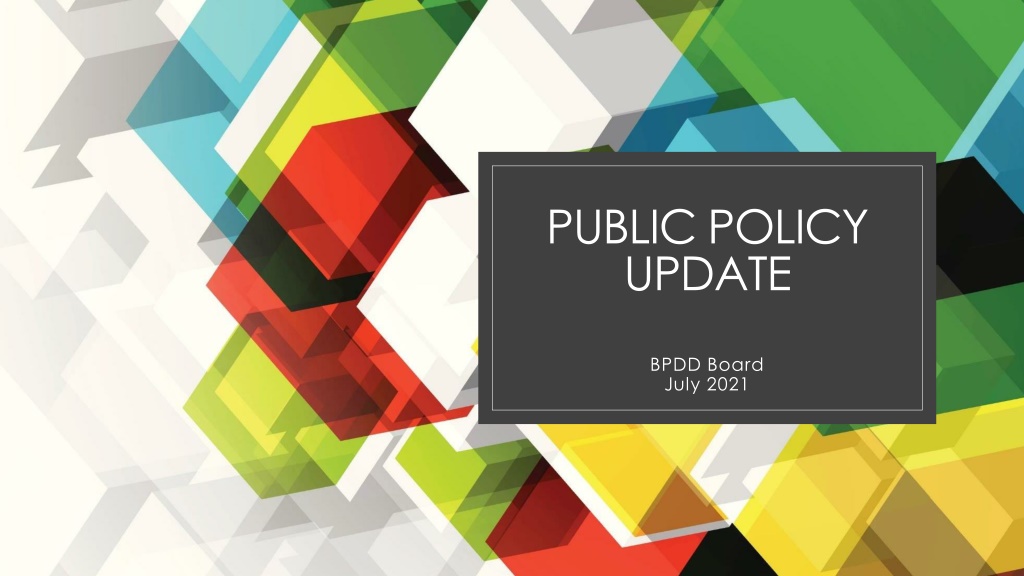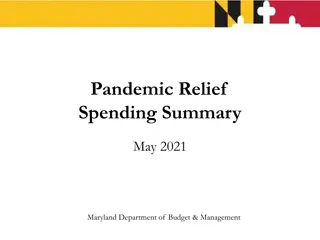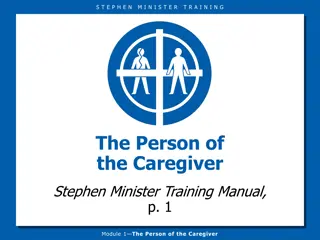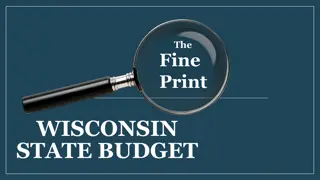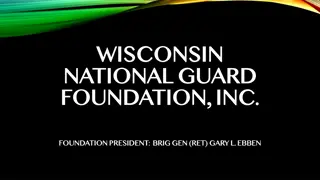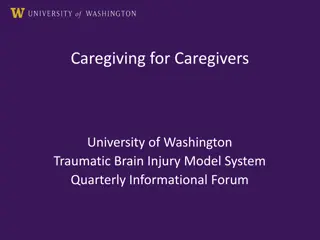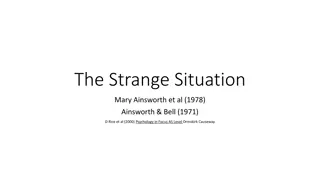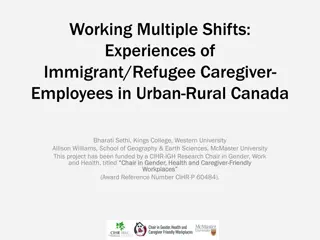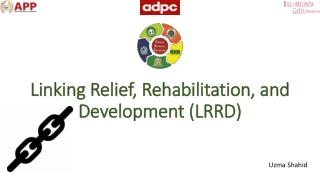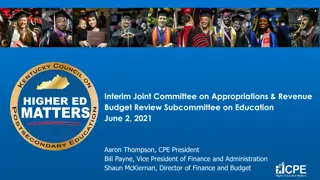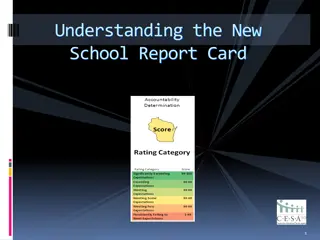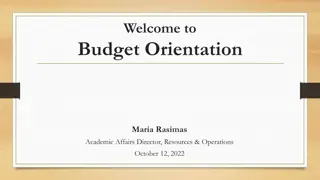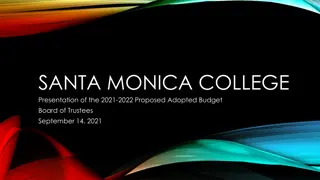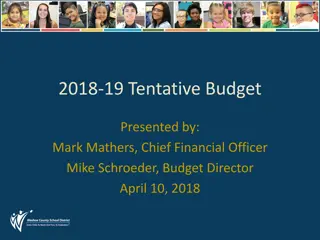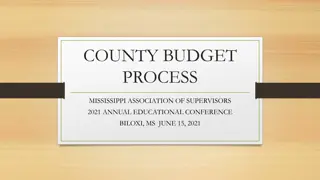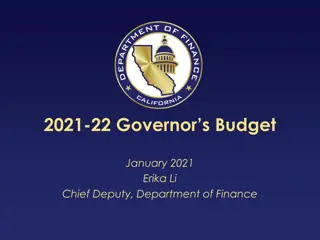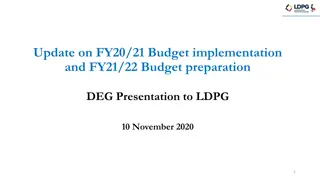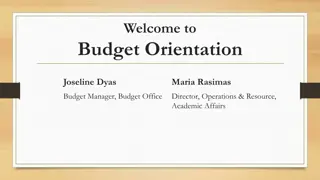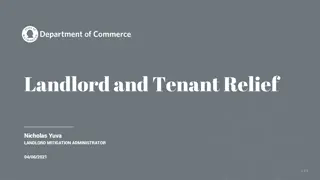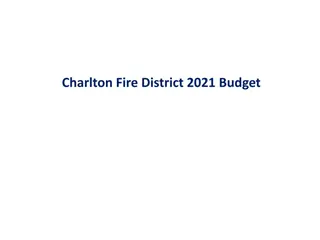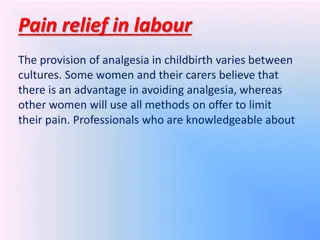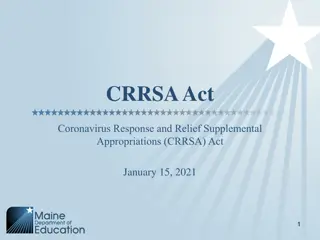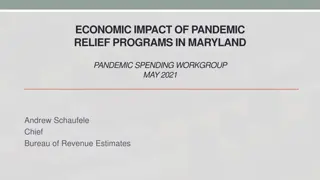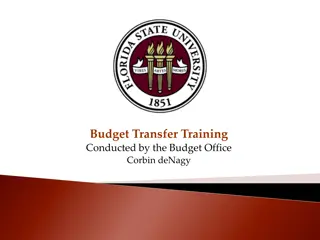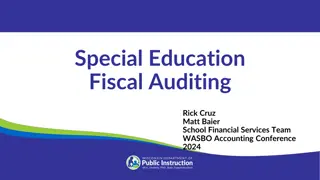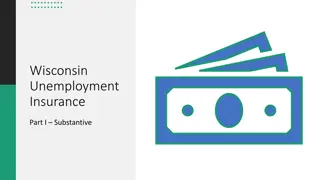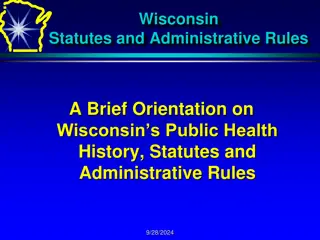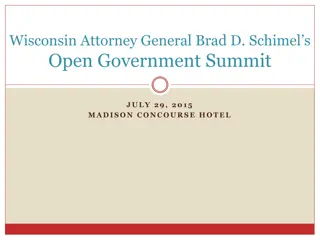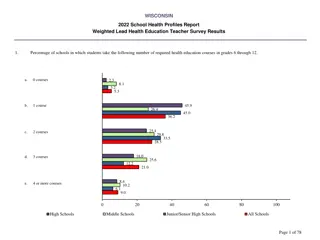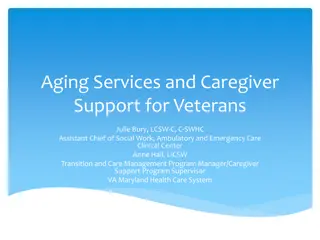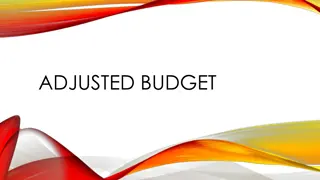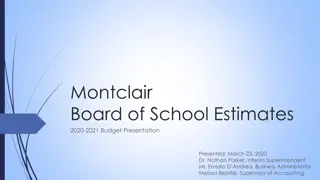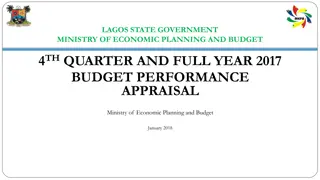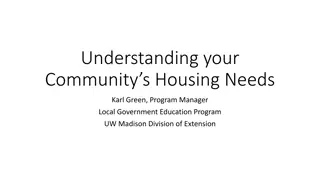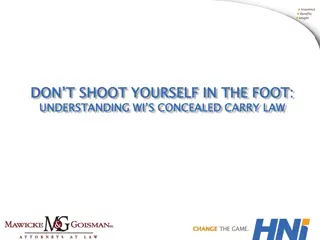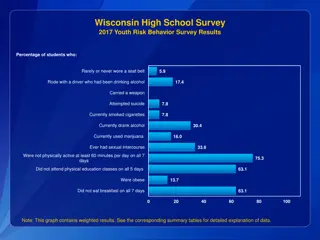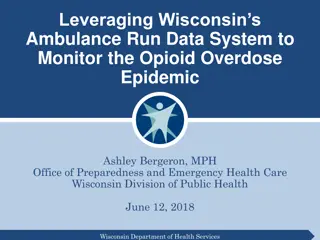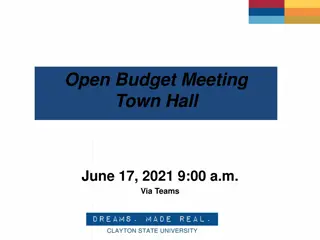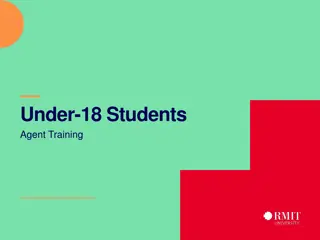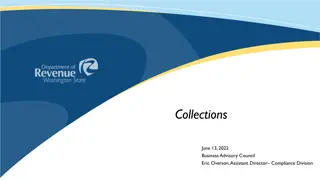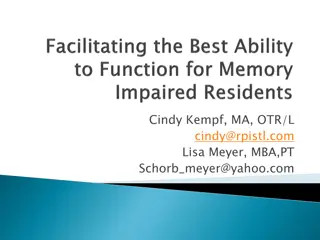Wisconsin State Budget and Family Caregiver Relief Update July 2021
Proposal updates for the Wisconsin State Budget and Family Caregiver Relief initiatives include adjustments in disability priorities, the budget process timeline, caregiver support programs, workforce funding increases, and long-term care services for adults and children. The proposals aim to enhance caregiver support, establish standardized training, create a registry for home care providers, ensure equitable compensation for Direct Service Professionals (DSP) across programs, expand ADRC services, and guarantee services for eligible children under the CLTS waiver program.
- Wisconsin State Budget
- Family Caregiver Relief
- Disability Priorities
- Long-Term Care
- Caregiver Support
Download Presentation

Please find below an Image/Link to download the presentation.
The content on the website is provided AS IS for your information and personal use only. It may not be sold, licensed, or shared on other websites without obtaining consent from the author. Download presentation by click this link. If you encounter any issues during the download, it is possible that the publisher has removed the file from their server.
E N D
Presentation Transcript
PUBLIC POLICY UPDATE BPDD Board July 2021
STATE BUDGET Disability priorities in (and not in) 2021-23 state budget
The Budget Process in Wisconsin State agencies make budget requests in the fall of even- numbered year. The budget is received by the Joint Finance Committee of the Legislature. Assembly or Senate receives budget, makes changes, then sends budget to other house of Legislature to make changes. Governor reviews budget passed by Legislature, vetoes portions, and signs remainder into law. Committee holds public hearings. A budget is proposed by the Governor and sent to the Legislature in January or February. With sufficient votes, the Legislature can override any of the Governor s vetoes. That rarely happens. A conference Committee of the Legislature may meet to reconcile the versions passed by the two houses. Committee makes changes and votes on budget. Begins in fall of even-numbered year Summer of odd-numbered year
Family Caregiver Relief Proposal Ensure all Direct Service Professionals (DSP) workers are compensated equally across long term care programs (Family Care, IRIS, CLTS). Expand the ability of Aging and Disability Resource Centers (ADRCs) to support family caregivers under age 59 Require each ADRC to designate a caregiver coordinator Expand caregiver resources through the tribes Governor s budget Not included Final budget Not included Included Not Included Included Not Included Included Not Included Create a Caregiver Tax Credit Included Not Included Create and fund a one-year family caregiver assessment pilot. Create statewide rate bands to make sure DSP workers are paid sufficiently no matter where they work in the state. Included Not Included Included Not Included
Family Caregiver relief Proposal Creates positions to conduct entity background checks, screen misconduct reports and conduct field investigations into misconduct allegations in regulated healthcare settings and programs. Establishes a pilot to create a home care provider registry that can be used by provider agencies and individuals seeking workers. Create pilot program to develop standardized training for direct support professionals Hospital Services to Caregivers Governor s budget Included Final budget Not Included Included Not Included Included Not Included Included Not Included Increase direct care workforce funding $30 M GPR increase direct care services in Family Care $30 M GPR increase funding to support workers employed by personal care agencies. $40 M GPR Increase Personal Care reimbursement $32 M GPR
Adult & Childrens Long-Term Care Proposal Adult Long-Term care Expand/equalize critical ADRC services across the state Fully fund EBS services statewide Children s Long-Term Care Ensure all eligible children who apply receive services under the CLTS waiver program: Governor s budget Final budget Not Included Not Included Not Included Not included Changed appropriation from sum certain to sum sufficient, which would guarantee all eligible children would receive services Not Included
Medicaid Proposal Improve access to dental care for Medicaid patients (50% reimbursement rate) Governor s budget $4.8M GPR 1st year, $9.5M GPR 2nd year Final budget Increases MA reimbursement rates by 40% by 2022 Not Included Raising BadgerCare income limits to 138% Federal Poverty Level (FPL Included
Help all babies & toddlers exposed to lead Proposal Support eliminating lead pipes and lead paint as a 100% preventable cause of I/DD Governor s budget $10M increase Expand Access to the Birth to 3 Program for eligible children who have a positive blood lead test above 5 micrograms per deciliter. Final budget No expansion of eligibility to cover additional children with lead poisoning, maintenance of effort funding for Birth to 3 included ($2.2 M) Not Included $2M for Windows Plus Program, which provides lead-safe renovation to high-risk areas in homes built before 1950 that are occupied by low-income families. $40 M increase in Safe Drinking Water Loan program for replacement of lead service lines $100K for Lead Screening and Outreach Grant Not Included $100 K
Special Education Proposal Increase special education categorical aid with ultimate goal of 60% reimbursement Governor s budget Increase special education categorical aid to 45 percent in FY22 and 50 percent in FY23 Change allocation to sum sufficient to ensure school districts receive the percent reimbursement promised by the state. Increase reimbursement rate to 40 percent in FY22 and to 60 percent in FY23 Final budget Increase to 30% reimbursement rate in second year of budget Not included High-Cost Special Education aid Increase to 40% reimbursement rate each year
Special education Proposal Increase funding for school mental health staff Governor s budget Increase of $46.5M for student mental health and wellness funding across all categories of pupil services (social workers, counselors, psychologists, and nurses), for all school districts that have pupil services expenditures. $7 M Final budget $12 M (only for school social workers) School based mental health services grants. $7M Increase the transition readiness grant to help students with disabilities transition into the workforce and postsecondary education. $1.5M GPR Special Education Transition Readiness grant increase Not Included
Non-Driver Transportation Proposal 2.5% increase for Public Transit systems Governor s budget Increase mass transit operating aids 2.5% Final budget Cut mass transit operating aids by 50% in year one of the budget for Tier A systems (Milwaukee and Madison transit systems). Flat funding for tiers B and C. Not Included $20 M for transit capital improvement Increases paratransit 2.5% per year Increases specialized transportation 2.5% per year Increase Specialized Transit 2.5% per year 2.5% increase for paratransit 2.5% increase 2.5% increase for specialized transportation Not Included 20% increase for Specialized Transit ($183K) 2.5% increase
Mental health Proposal Support increased reimbursement for outpatient mental health and child adolescent day service Governor s budget $16M GPR ($4M 1st year, 12 M 2nd year) increase Final budget 15% increase outpatient mental health positions, 20% increase child adolescent day service position. 10M GPR in 1st year of biennium (2021-22) in JFC program supplements appropriation LOCAL CRISIS RESPONSE Regional Crisis Centers $12.6M Regional Crisis Stabilization facilities $5M $850K each yearCounty Crisis Phone Lines $1.2M GPR each yearPeer-Run Warmlines $1.9 million Not included Not included Behavioral Health Services for Individuals who are Deaf, Hard of Hearing, or Deaf-blind Collaboration with law enforcement Not included Crisis Intervention Training Grant $750K $1M to expand statewide Included Child Psychiatry Consultation Program $500K Forensic Assertive Community Team: $4.5M Not included
Other BPDD priorities Proposal Governor s budget Final budget Fund development of free online training to family and volunteer guardians Included Not Included Increase funding ($1.9 M) for Adult Protective Services Not Included Not Included
BEYOND THE BUDGET Funds from Federal COVID relief legislation could be used to fund disability priorities
Federal funding Congress has passed four COVID-19 relief bills direct federal funding to states to cover costs of COVID response and recovery. Federal medical assistance percentage (FMAP) increase States will receive a 6.2 percentage-point increase in their federal share of Medicaid spending (i.e., the federal medical assistance percentage, or FMAP) through at least the end of 2021 and until the national Public Health Emergency ends. American Recovery Plan Act (ARPA) Some ARPA money is being directly distributed to local governments, school districts, and specific services (i.e. Transit, Medicaid) through formula allocations Wisconsin $350M additional dollars (Jan through Jun) to invest, including investments in home and community- based services. Governor Evers has broad discretion on American Recovery Plan Act (ARPA funds are spent.
Federal funding Federal funding from ARPA and previous COVID-19 relief bills can be invested in disability priorities, Funds are one-time allocations and must be spent within a certain time-frame. Funds are not well suited for ongoing needs, but many disability priorities like technology system updates, pilot programs, studies--need an upfront initial investment. Disability advocates have been communicating with the Governor s office and individual state agencies on ways to invest money that will improve outcomes and services for people with disabilities and family caregivers.
BETTER JOBS ACT Congress could make historic investment in Home & Community Based Services
Federal bill could provide states with $400B for HCBS Includes $400 billion in funding to strengthen and expand the Medicaid HCBS infrastructure and workforce. Providing additional funding for HCBS supports is necessary because people want to live in the community, not institutions. For decades, large-scale institutions have been the only option for people living with disabilities and have received far more funding than the lower cost HCBS services that keep people out of Medicaid funded institutions. $400B for HCBS is an attempt to better invest in community services and supports to provide safer environments in which people can make more of their own choices. BE AWARE: Institutions
ACTION STEPS Tell Congress to invest in HCBS, not institutional settings
Contact U.S. Senators and Congressional Representative You can help Congress understand how the Home and Community Based Services provided in Family Care, IRIS, and CLTS are critical to your daily life. The increased funding for HCBS in the Better Jobs Act is needed and will help support the system people want. Wisconsin s U.S. Senators Sen. Tammy Baldwin, (202) 224-5653 Sen. Ron Johnson, (202) 224-5323 Wisconsin s Representatives Dist. 1 Rep. Bryan Steil, (202) 225-3031 Dist. 2 Rep. Mark Pocan, (202) 225-2906 Dist. 3 Rep. Ron Kind, (202) 225-5506 Dist. 4 Rep. Gwen Moore, (202) 225-4572 Dist. 5 Rep. Scott Fitzgerald, (202) 225-5101 Dist. 6 Rep. Glenn Grothman, (202) 225-2476 Dist. 7 Rep. Thomas Tiffany, (202) 225-3365 Dist. 8 Rep. Mike Gallagher, (202) 225-5665
Wisconsin specific talking points More than 74,000 Wisconsin adults and 13,000 children with disabilities are in one of Wisconsin s Medicaid-funded home and community-based long-term care programs (Family Care, IRIS, PACE, Partnership, Children s Long-Term Supports Program, etc.) These programs keep people with disabilities and older adults living and working in their communities. In-home supports and services are cost effective. On average, supporting people to stay in their own homes is significantly less expensive than nursing homes and other Medicaid- funded institutional settings. People who live in and are connected to their communities are more independent, healthier, and safer. Most people are choosing to remain in their own homes as long as possible; state programs that help people stay where they want to be is good public policy. HCBS services are important to local economies and bring businesses and jobs into communities for a diverse set of professionals including nurses, home health care, direct care, rehabilitative and habilitative therapists, specialized therapists, vocational, day service and transportation, and many other important professions.
Wisconsin specific talking points A lack of available home and community based direct care workers may force people to receive less care, go without the care they need, or unnecessarily force people into nursing homes at great expense to the state and individuals independence. Many family caregivers are providing significant resources and personal labor to fill in the caregiving gaps the best they can, but this is not sustainable. Many family caregivers rely on the supports their loved ones receive in Family Care and IRIS to keep them in the workforce. Survival Coalition conducted a spring 2021 family caregiver survey. Results show people are going without needed care and families are reducing work to provide care. Survey results reflect what is happening in Wisconsin communities and emphasize the need for increased resources.
